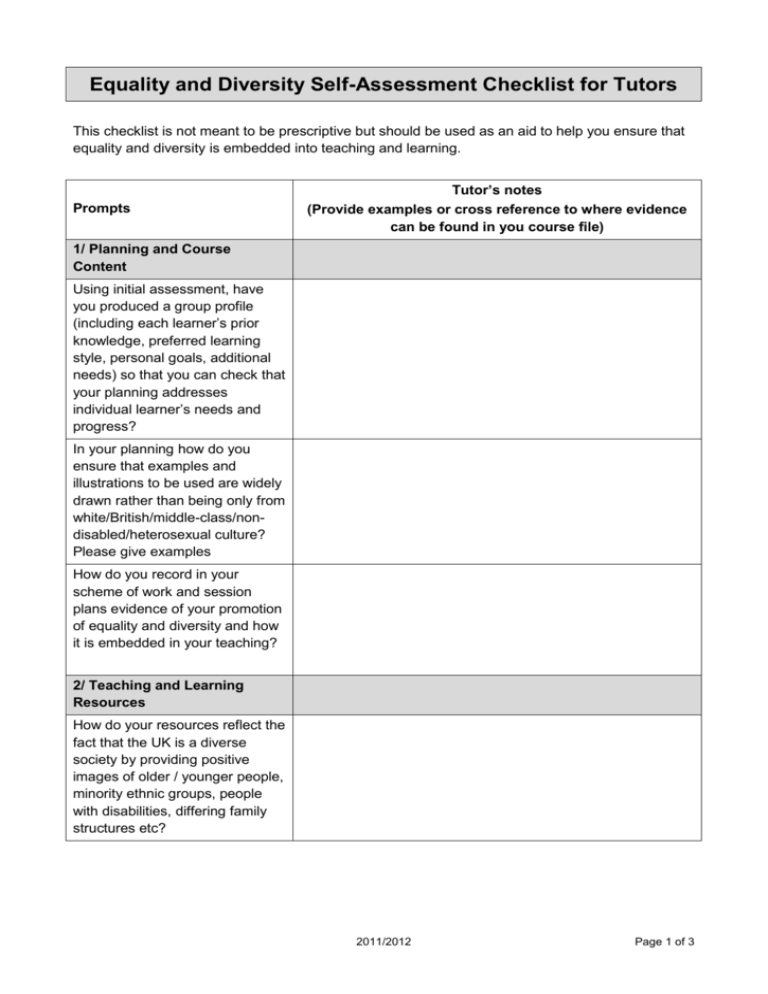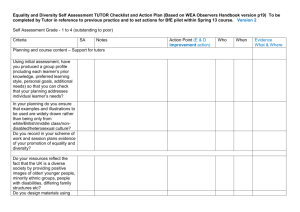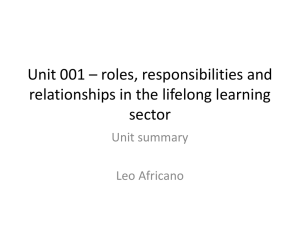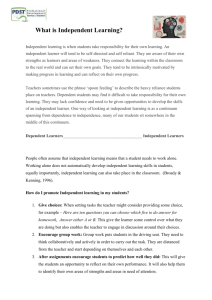Equality and Diversity Self-Assessment Checklist for Tutors
advertisement

Equality and Diversity Self-Assessment Checklist for Tutors This checklist is not meant to be prescriptive but should be used as an aid to help you ensure that equality and diversity is embedded into teaching and learning. Prompts Tutor’s notes (Provide examples or cross reference to where evidence can be found in you course file) 1/ Planning and Course Content Using initial assessment, have you produced a group profile (including each learner’s prior knowledge, preferred learning style, personal goals, additional needs) so that you can check that your planning addresses individual learner’s needs and progress? In your planning how do you ensure that examples and illustrations to be used are widely drawn rather than being only from white/British/middle-class/nondisabled/heterosexual culture? Please give examples How do you record in your scheme of work and session plans evidence of your promotion of equality and diversity and how it is embedded in your teaching? 2/ Teaching and Learning Resources How do your resources reflect the fact that the UK is a diverse society by providing positive images of older / younger people, minority ethnic groups, people with disabilities, differing family structures etc? 2011/2012 Page 1 of 3 In what way do you design materials using scenarios that challenge stereotypes: e.g. 2 men going on holiday together rather than a family; wheelchair users playing sports etc? Do you provide handouts in advance for any learner that may have difficulties coping with reading material or following verbal instructions in the session? 3/ Classroom Activities and Management Where appropriate do you consult with all learners about room set up to ensure that everyone is involved, including those with physical or sensory impairment? During induction do you negotiate ground rules with the group that cover learners’ right and responsibilities, do you have a copy of the ground rules in your course file and do you revisit the ground rules during the course if necessary? If yes please give examples During induction do you explain your organisation’s safeguarding procedures and student charter / code of conduct, using simplified versions for LDD and beginner ESOL learners? How do you give your learners opportunities at induction and on the course to disclose a disability and do you make reasonable adjustments to support additional learning needs? 2011/2012 Page 2 of 3 Do you use a variety of group activities e.g. set up small group and pair work activities in order to facilitate differentiated learning and to encourage learners to mix with people from different backgrounds? How do you involve the existing knowledge and experience of learners from different backgrounds and cultures and make it clear that these contributions are valued and that learners do not feel excluded? How do you exploit naturally occurring opportunities, for example, during group discussions, to promote an understanding of equality and diversity issues? How do you ensure that learners listen to each other’s views, even if they are different from their own? How, during whole group discussions and activities, do you make sure that no one person dominates? How do you challenge offensive or inappropriate language or behaviour? How do you promote peer support, team work, learner responsibility and other skills that help create a safe, supportive and collaborative rather than competitive learning environment? 2011/2012 Page 3 of 3











